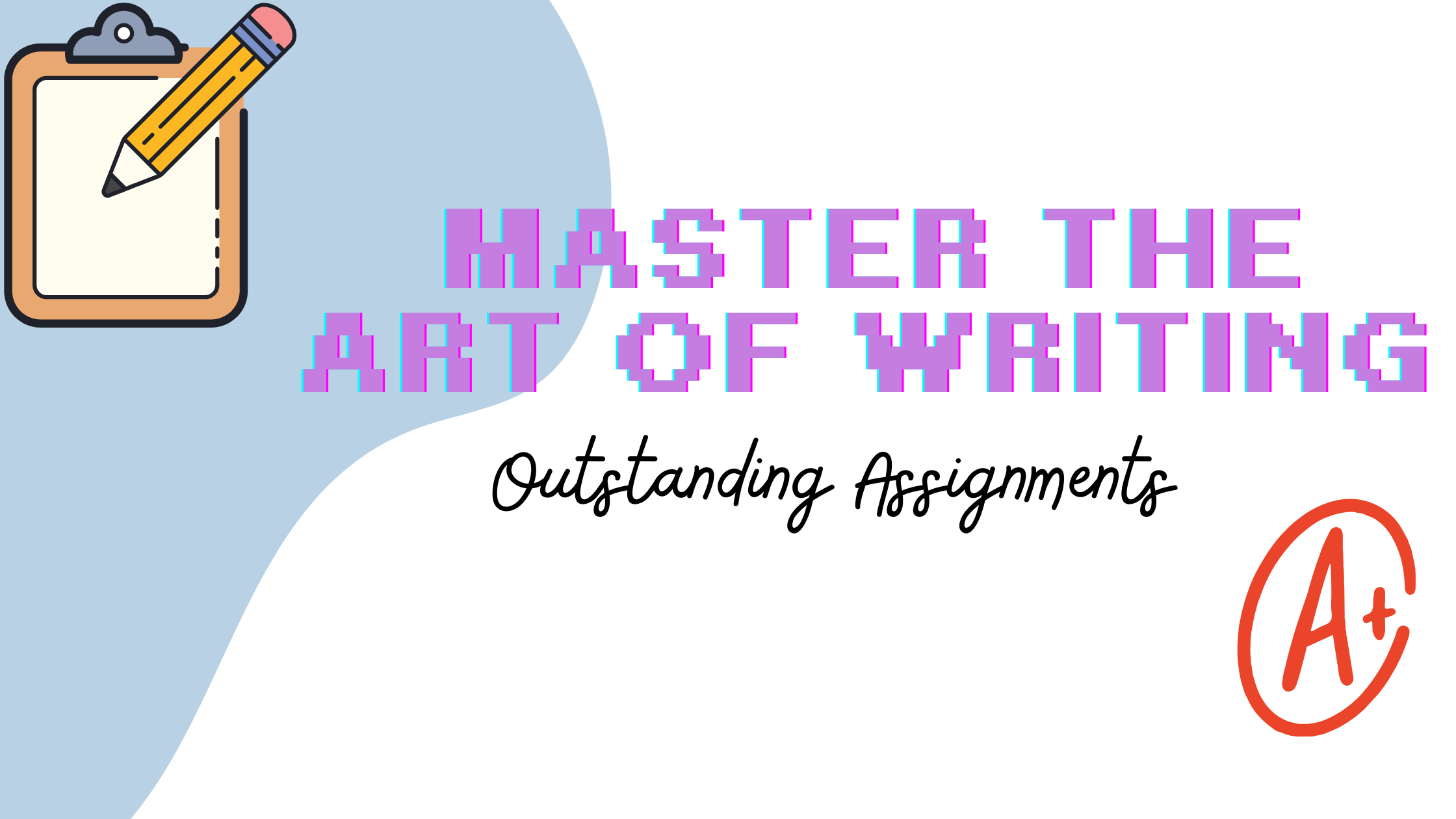
Listen To This Blog
Introduction
Assignments can feel overwhelming if you don’t choose a unique topic, gather useful information, and plan your outline well. There are many types of written assignments, including essays, case studies, dissertations, and coursework.
Working on academic assignments is nothing new for students, but achieving a perfect, error-free paper can be challenging, especially when they face obstacles like:
- Unclear topics
- Complex references
- Lack of strong examples
- Limited research sources
- Tight deadlines, and more…
Each of these challenges can feel overwhelming, but we know how to help put your worries to rest. Ready to see the full picture? Take a few minutes to read this blog.
let's dive in!
A. Research Planning and Execution
Executing without proper planning and research wastes time and effort. Regardless of whether the assignment is easy or challenging, straightforward or complex, always start with thorough planning and research.
Here's how:
- Start by thoroughly understanding the assignment topic.
- Ensure you're clear on the main context.
- Explore different angles for your research.
- Read extensively on the subject and develop solid research questions.
- Locate relevant sources, take notes, and organise your citations.
Most importantly, you need to understand the purpose of your assignment. Once you have a clear plan in place, the rest of your academic journey will become much easier. But wait, there’s more to it than what we’ve covered so far!
B. Maintain Smooth Transitions
An engaging hook, well-structured body paragraphs, and a strong conclusion are key elements of a successful assignment. However, all your efforts will be wasted if the paragraphs don’t connect smoothly.
So, take the advice above to heart and focus on this often-overlooked aspect of creating a flawless assignment.
Focus each body paragraph on the main concept. Ensure it connects to the overall structure and broader context.
Use a transition sentence to link each paragraph, from the first to the second, and so on. Incorporate transition words to maintain flow and help readers follow your ideas.
Keep the overall structure of your paper in mind while using transitions.
Words like “therefore,” “namely,” “although,” and “nevertheless” can help summarize ideas effectively.
Just keep these points in mind, apply the right strategy, and you'll ensure a well-researched and logically sound paper by the end.
C. Be Clear and Define Key Points
The 'what' and 'who' are crucial elements to consider when aiming for a successful assignment. Here’s a quick overview of the key components to keep in mind for this part of the process.
What Who Focus on the type of document you're working on. Define your target audience. What are your end objectives?
If the audience is students, identify their academic levels and adjust the paper accordingly. Determine the kind of document you’re creating—essay, review, report, memo, or proposal.
Once you know your audience, tailor the tone and language to suit them. Now that you have a clear understanding of the bigger picture, focus entirely on the points mentioned above and move forward with confidence.
D. Build Strong Sentence Structure
"The assignment delves into the unknown mysteries of the world."
"This paper takes you on an exciting journey through the Earth's hidden secrets."
Which one sounds better? I’m sure it’s the second one. It’s all about how you present things and the way you do it. In assignment writing, sentence structure and word choice are key. Speaking of sentence structure, the tone of written language can vary across universities and academic standards.
University writing tends to be more formal and technical, while social media or casual conversation is often fun and informal.
Sometimes, though, it’s best to strike a balance. You can maintain a formal tone while incorporating a conversational style to reduce monotony and better engage with your readers
E. Grasp the Details of Referencing
Referencing is a crucial aspect of ensuring flawless assignments. Using someone else’s ideas or words without proper attribution is a serious breach of ethics. For instance, last year, Harvard University faced scrutiny over potential plagiarism in the doctoral dissertation of its president, Claudine Gay. The work was criticized for “duplicative language without appropriate attribution.” This highlights how plagiarism can take many forms.
Although it may sometimes seem accidental, plagiarism is always considered unethical, no matter the justification. Therefore, it’s essential to understand how to properly cite sources and familiarize yourself with referencing styles before working on an academic paper. Confirm the referencing style with your instructor before you begin.
- Review other works in your field to understand the citation styles commonly used.
- Learn the specifics of referencing and citation. (For example, when citing a journal article, include the journal name in italics, issue and page numbers, and for articles accessed from databases, include the database name, date, and URL.)
- Follow the correct order of referencing. (References should be listed alphabetically by the first author’s name, or alphabetically if no author is listed.)
- Understand the difference between references and a bibliography.
- (A bibliography lists all materials you consulted, whether cited or not, while references only include items you've directly cited.)
Keep these guidelines in mind, apply the right strategy for your academic work, and aim for academic excellence.
The Dos and Don'ts of Academic Writing
All in all, it's time for a quick recap. Many students unintentionally undermine an otherwise excellent paper simply because they overlooked key dos and don’ts. But not anymore! Check out the list below to elevate your academic work and achieve success.
What To Do What Not To Do, Use full verb forms, e.g., cannot, is, are, they Avoid shortened verb forms, e.g., isn’t, aren’t, we’re, they’re Choose formal vocabulary, e.g., much, many, large quantities of, completely, Avoid informal expressions, e.g., tons of, heaps of, got to, gonna Clearly state main ideas and contexts. Avoid sweeping generalisations Use complete sentences with logical connections , Don’t overuse bullet points or lists Focus on facts and reports, leaving assumptions aside ,Don’t start sentences with "I think" or "I assume"
To Conclude
Now that you understand the key elements of writing an exceptional assignment, embrace these best practices and move closer to your academic goals. If you need additional help and guidance, sign up with Greatassignmenthelper for personalized support. Our team of academic experts is dedicated to helping students find the right path to success and achievement.
Frequently Asked Questions
How to write a university assignment?
Here’s how you can excel in your next university paper:
- Focus entirely on the topic.
- The first page must include a running header.
- Refer to the right samples and examples for insights. If you have doubts, clarify the task at the beginning. Cite each source correctly.
- Improve your handwriting skills to enhance your presentation.
- Invest time in proofreading and editing.
- Ensure the paper is completely plagiarism-free.
How do I write a 10-page assignment?
Writing a 10-page assignment can be challenging without a proper structure. Here’s what you must know:
- Create a strong outline and an engaging introduction.
- Set personal deadlines to stay on track.
- Conduct extensive research, keeping the word count in mind.
- Ensure your references are relevant and accurate.
- Work on your assignment consistently.
What is the format of an assignment?
The format of academic papers can vary by standards and courses. However, here are some common guidelines for college and university students:
- An assignment typically consists of five sections: title page, introduction, body, conclusion, and reference list/bibliography.
- Indent each paragraph and avoid making them too long.
- Use block quotations for text that is three lines or more.
- Include a separate section/page for the bibliography.
- Use 1.5 or 2.0 line spacing for academic papers.
- Download the latest assignment template (PDF or other versions) for quick reference.
How to submit an assignment on time?
Deadline pressures can be overwhelming. Follow these tips to meet submission deadlines like a pro:
- Set deadlines for each task and allocate specific time slots.
- Work on your assignment daily, without fail.
- Refer to strong assignment examples to get ideas quickly.
- Break large tasks into smaller, manageable parts.
- Write and revise your paper simultaneously to save time.

